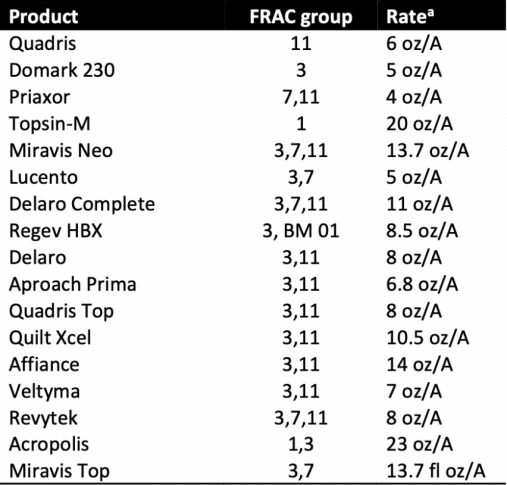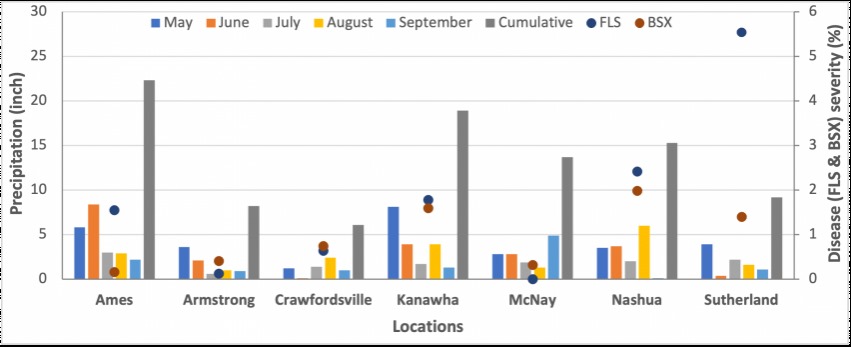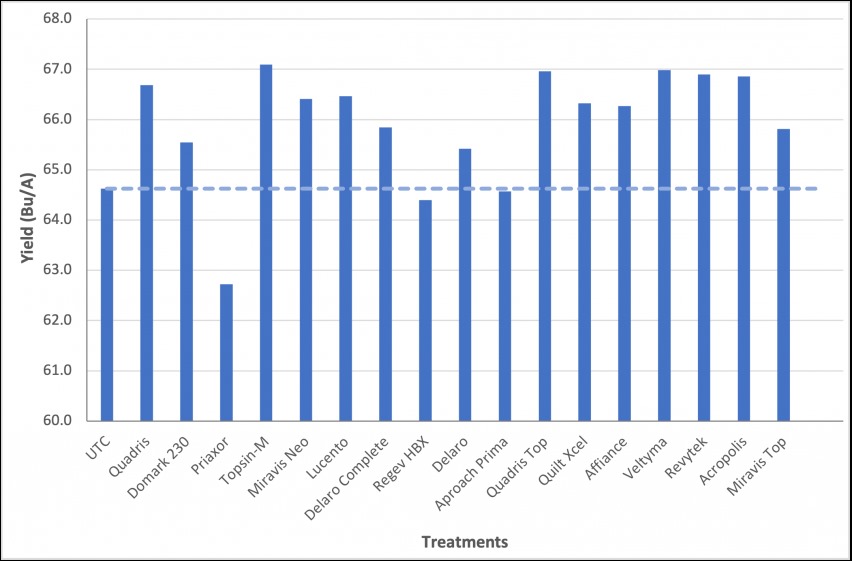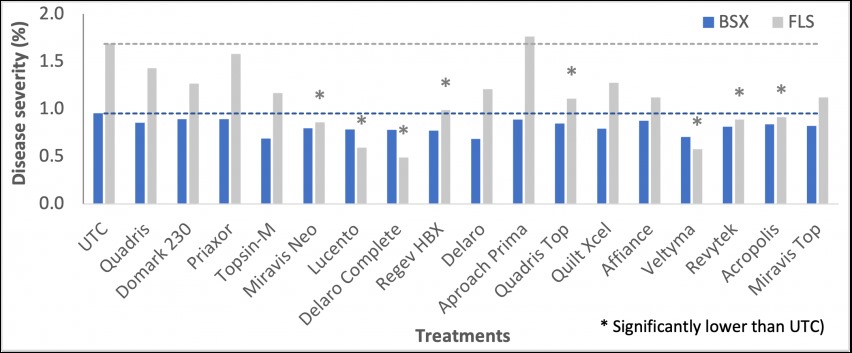As compared to untreated control (UTC), yield was significantly greater for Miravis Neo at McNay and in Domark 230, Lucento, Quadris Top and Veltyma at Sutherland. However, overall yield response to fungicide across the seven locations was not statistically significant (Figure 1). In 2022, overall soybean yield was similar to 2021 but greater than 2020 (Mueller et al. 2021, 2020). Check plots, when all the locations were combined, yielded 64.6 bu/A. Overall, no fungicides produced statistically greater yield than check although yield in some fungicide treatment was numerically greater.
Management recommendations
Soybean fungicides can provide yield benefits when there are foliar diseases. Some reports show yield benefit of fungicides at low levels of disease or when disease was absent but this is not consistent. Cercospora sojina and Septoria glycines strains resistant to QoI fungicides were confirmed throughout Iowa a few years ago. Judicious use of fungicides and an integrated method of disease management that does not depend only on fungicides, should be used to manage the diseases and preserve the efficacy of existing fungicides. Disease management practices such as crop rotation, planting disease-resistant cultivars, and application of fungicides with multiple modes of action can all be used slow selecting for fungicide resistance.
Table 1. Research location, seed rate, planting date, fungicide application date, disease assessment date, and harvest date for seven soybean fungicide trials throughout Iowa in 2022

Table 2. Fungicide products and their application rate for soybean fungicide trials conducted in seven Iowa State research and demonstration farms throughout Iowa in 2022

All products were applied at R3 stage with nonionic surfactant (Induce at 0.3% v/v)

Figure 1. Monthly and cumulative precipitation from May to September and average severity (%) of frogeye leaf spot (FLS) and Septoria brown spot (BSX) at untreated-control plots across the seven research locations in Iowa in 2022.

Figure 2. Soybean yield after application of fungicide products combined across all seven experiment locations in 2022. All fungicide products were applied at recommended rate at the beginning of pod (R3) with nonionic surfactant (Induce at 0.3% v/v). The treatments were not statistically different (P = 0.13).

Source : iastate.edu